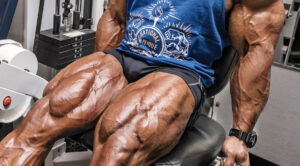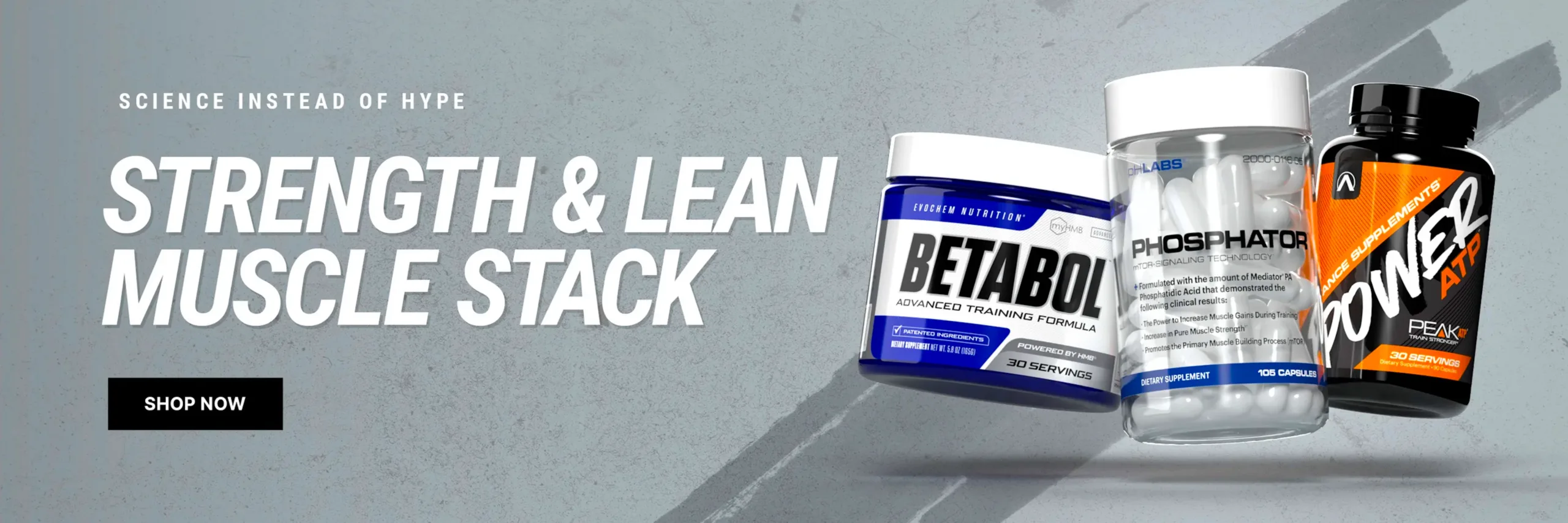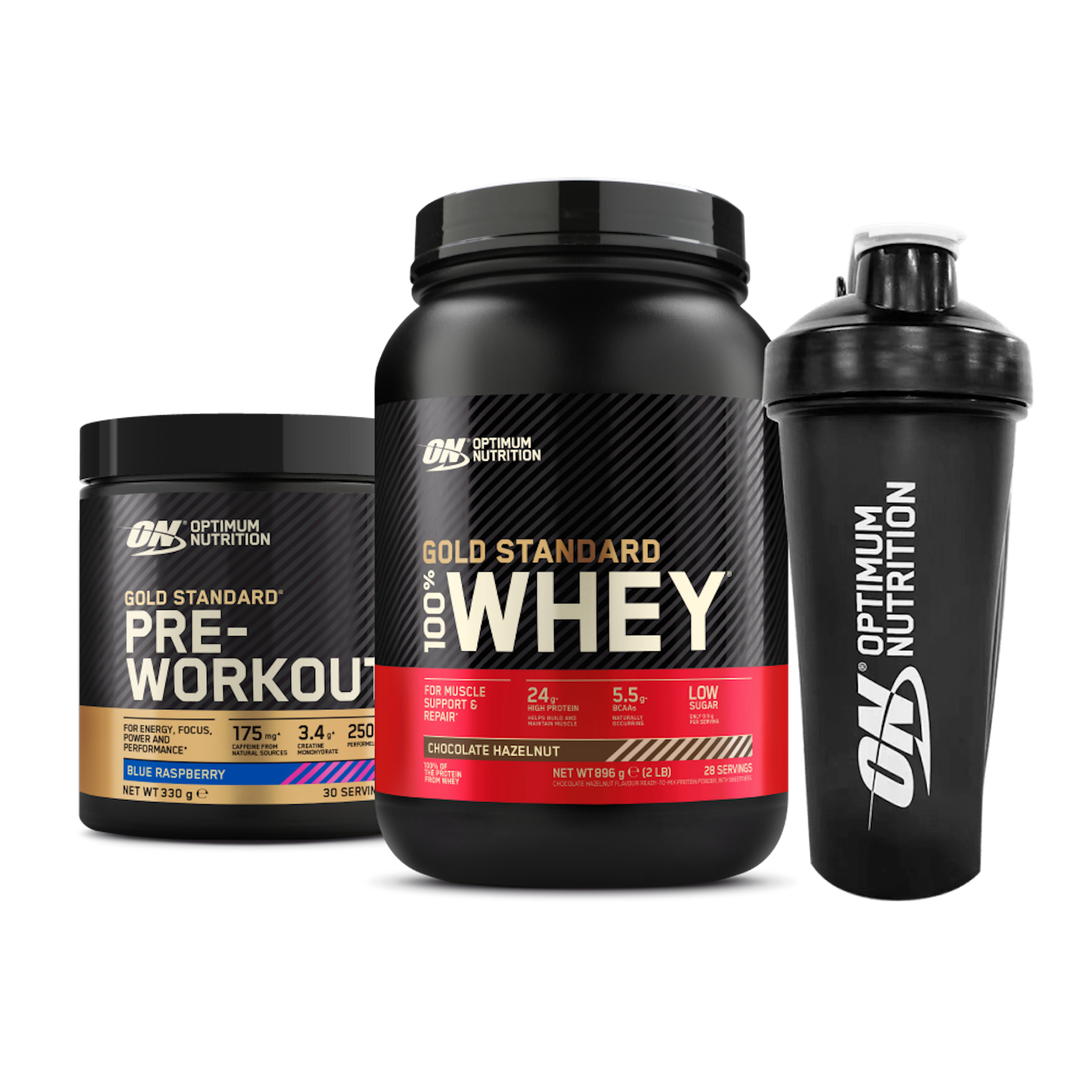Nothing screams strength and power more than a pair of well-defined quadriceps (quads). Whether you’re lifting recreationally, for mobility, strength, or play a sport, you know the importance of having strong quads.
Not only are quads a focal point of your legs when wearing a nice pair of shorts, but quads are essential in helping us move and perform.
The good thing about building strong quads is that the approach is relatively straightforward. The process takes time and persistence, planning, and a solid exercise plan. This article will provide you with five quad exercises that are helpful in building mass, plus advice on how to do them correctly.
Front Squat
The front squat is on top of this list because it’s one of the most effective exercises for quad strength and size. Another benefit of doing front squats is that they strengthen your legs and hips, and of course emphasize the quads.
Front squats are similar to back squats (which we will cover shortly) except that you’ll rest the barbell across the front of your shoulders. The purpose of a front squat is that they move the center of mass forward and place the load more on the quads instead of your glutes.
“Front squats also allow you to hold a more firm posture without putting too much pressure on your spine”.
How To Do A Front Squat
Position yourself under a loaded barbell so that the height of the bar meets the height of your shoulders. Ideally, you should use a squat rack, but you can also do the same setup with a Smith Machine.
The barbell will be positioned across the front side of your shoulders as you step under the barbell. Bend your elbows back as you place your fingertips under the barbell. Your fingertips “grip” should be touching the barbell at about shoulder-width distance.
As you get ready to squat, keep your chest, core, and back tight. Make sure you have control of your breathing as you create abdominal pressure. If you’re wearing a weightlifting belt for this exercise, it will help you “feel” your breathing as you apply the pressure against the belt.
The last step is to bend at your hips and knees as you lower yourself and the barbell into a squat. Think of your form as if you’re sitting in a chair.
Try to squat low enough until your thighs are parallel to the ground. Avoid caving in your knees and hips as you stand back up, instead, drive up with your quads and return to starting position.
Back Squat
Any solid experience plan has to include the back squat. There is simply nothing more traditional and essential to building and recruiting the leg muscles (especially quads) than the back squat. When you think about it, squatting is a movement we do daily without even realizing it. The last time you got in and out of a chair required you to squat.
Squatting with a barbell allows you to work your glute and leg muscles like hamstrings and quads. Not only that, but you’re also engaging your core and back muscles to help you stay stable.
The back squat is an essential part of your exercise plan because it carries benefits into other movements such as running and jumping, which also directly involve your quads.
How To Do A Back Squat
Similar to the front squat, you’ll step under a loaded barbell with your stance at shoulder-width apart. The barbell should rest across your upper traps so that you can securely grasp it with your hands.
“With your elbows tucked in and under your body, slowly lift the barbell from its racked position. Next, take two or three steps back as you position yourself to squat down. Remember to keep your stance at shoulder-width and your heels firmly planted on the ground”.
Take a deep breath as you expand your stomach. If you’re using a weightlifting belt, you’ll feel your stomach pressing against it as your core tightens. By using a weightlifting belt you give a signal to your core to tighten which provides stability to move heavy loads.
With control, squat down as close to or parallel to the ground as possible. The driving force of the squat will come from your heels so make sure you’re not caving your knees or legs inward as you explode up.
The Split Squat
A split squat offers more versatility than a traditional squat because you can work one leg at a time. If one leg is weaker than another or if you’re struggling with knee pain, the split squat allows you to evaluate and correct the weak points.
“Additionally, a split squat allows you to target your quad from different angles depending on your split squat variation”.
The best part about a split squat is that you don’t have to use a barbell, unlike the front and back squat. As a bonus, a split squat also helps target your hamstrings better than a front or back squat if you’re performing a variation with an elevated rear foot.
How To Do A Split Squat
As with most exercises, there are variations on how you can perform a split squat. We briefly mentioned performing a variation with the rear foot elevated. In this case, we’ll focus on the traditional split squat form.
You’ll want to grab a pair of dumbbells in each hand. While standing, take a step forward and kneel down with your front leg at 90 degrees. Be careful to avoid one of the biggest mistakes with a split squat, which is bringing your body too forward.
Your body should remain solid and upright the entire time. As you squat down, keep your chest up, and use the back leg for support. Once your back leg is almost touching the ground, pause, and step back up.
The Goblet Squat
One of my personal favorite exercises for activating the quad muscles is the goblet squat. The term ‘goblet squat’ comes from the fact that you hold a dumbbell or kettlebell out in front of your chin just like you would hold a goblet.
Similar to the front squat, the goblet squat is effective in placing more weight/load on the front portion of your legs and helps you maintain a more neutral spine. This is a great quad workout for beginner to advanced lifters.
How To Do A Goblet Squat
Stand upright while holding a kettlebell or dumbbell directly below your chin. Depending on your lifting experience, you can elevate your heels to create a greater activation in your quads.
Your stance can be shoulder-width or inside shoulder width, but that also depends on your mobility and experience. Different stance variations target various aspects of your quads, so you can program your stance as you advance in training.
Before you begin your squat, be sure to keep your core firm, shoulder blades together, and practice proper breathing. Next, push your knees out which will activate your quads, hips, and glutes. Squat as deep as you can or until your things are parallel with the floor. Push up with your quads as you stand back up.
The Leg Press
The leg press is the ultimate choice for quad definition and strength, especially if you’re worried about excess stress on the spine. The seated position and back-supported padding on the leg press allow you to load heavier weight than if you would with any of the abovementioned exercises.
The leg press is also a preferred exercise for beginner lifters or for those who want to simply increase leg size with more weight. Unlike split squats or goblet squats, the leg press has built-in safety features that you can deploy if you happen to reach failure.
The leg press typically has a wide sled for foot placement and you can alternate your foot positioning based on what is most suitable for you. You can target the quad muscle from different angles based on your stance.
How To Use A Leg Press
Place an adequate amount of weights on the attached leg press bar. Next, sit down in the leg press seat and place your feet on the sled. As a general rule, your feet should be shoulder-width, but you can test out which stance variation works best for you.
Press up with your legs and unlock the safety bars and slowly lower the sled toward your chest and torso. Your stopping point should be at about 90 degrees. Once you reach this position, press up with your legs to starting position. Remember to never lock out your knees.
Guide For General Lifters
If you’re a bodybuilder or powerlifter, your training will differ from the general instructions here. For example, some bodybuilders will separate their leg days into quad-focused days and then dedicate a different day for hamstrings and glutes.
Whereas powerlifters might have their own training split that focuses on the three major compound movements. If you’re a powerlifter you can also incorporate some of the exercises mentioned in this post into your leg day routine.
Now if you’re just starting out and don’t categorize yourself as a powerlifter or powerlifter, but still want to have mass and power in your quads, then picking moves from this list will definitely do the trick. If you’re an experienced lifter, then you likely already do most of the already mentioned exercises.
You don’t have to do all of them, so pick your top two or three and incorporate them regularly. When you start going up in weight on your chosen exercises, then you can start adding variety with a few of the other exercises.
Suggested Reps And Sets
Everyone will find what works best for them, but since the quads are a bigger muscle group than your arms or shoulders, you will want to perform more sets and reps. A general rule of thumb is to stick with 10 to 16 reps for four sets.
For example, if you picked three exercises from this guide and performed four sets in each, you’d be making solid progress by doing 12 total sets.
Here are rep ranges based on your weightlifting goals:
- For strength: low reps (3 to 6)
- For muscle: moderate reps (8 to 12)
- For endurance: high reps (15 or more)
You can always mix up the rep ranges or start with low, move to moderate, and end with high reps. The programming of your workouts is left up to you, but you should be conscious to avoid a plateau.

The Final Word
This article has given you five solid quad exercises that are helpful in building mass, plus advice on how to do them correctly. There may be lingering questions about whether using supportive gear is essential. Put simply, if you need it and it benefits you then yes use it.
For example, if you’re having trouble with your knees or wanting extra support, knee sleeves or knee wraps are a good option to incorporate as they provide compression that helps regulate blood flow. Remember that proper form is always the priority and that gear is meant to provide support, not heal or fix a problem.
For more news and updates, follow IFBNewsfeed.Org on Facebook, Twitter, and Instagram.






